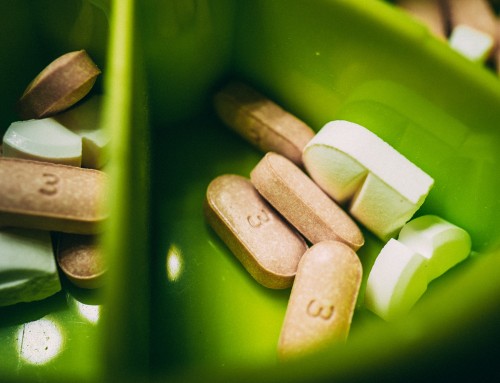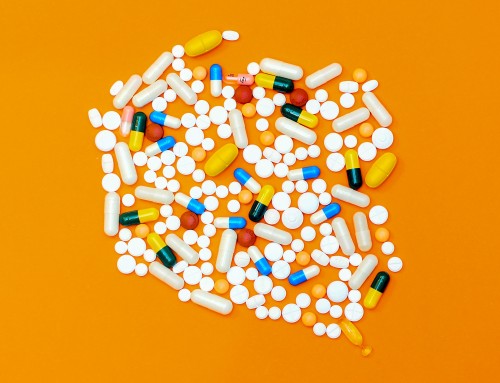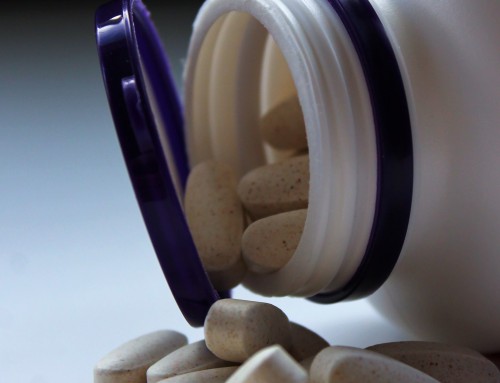Do weight loss supplements work?
This review will aim to address the different claims that supplements make that help aid weight loss. There are four common mechanisms in which supplement companies state that they can do this.
Weight-loss supplements typically fall into 1 of 4 categories depending on their hypothesized mechanism of action, which includes; products that block the absorption of fat or carbohydrates, stimulants that increase thermogenesis, products that change metabolism and improve body composition, and products that suppress appetite or give a sense of fullness (1).
Products that block the absorption of fat or carbohydrate
The common ingredient for carbohydrate blockers are amylase inhibitors that are designed to reduce the absorption and digestion of fat. The side effects of using this product however can include bloating and gas. There is little to no research that this method of weight loss is effective however and more evidence is needed to fully establish how useful this method is.
In regards to fat blockers the most common ingredient used within supplements is chitosan. Chitosan is a chemical derived from shrimp and other crustacean shells. It has been suggested that it helps aid weight loss (1). The reasons behind how it can achieve this involves decreasing fat absorption, increased fecal fat (2) and a slowing of the stomach which increases satiety (3). A side effect of chitosan can be flatulence. There is some significant evidence that there is minimal weight loss, however there is little to no evidence that significant weight loss occurs.
Improving and altering body composition
Supplements that claim to change body composition are suggested to work by changing the carbohydrate or fat metabolism which in turn decreases body fat and increases lean body mass. The main ingredients used for this suggested method of weight loss include calcium, CLA (conjugated linoleic acid) and Chromium.
Major et al. (4) found that consumption of supplements containing calcium is associated with a reduction of body weight or reduced weight gain. There are several mechanisms for how this occurs which includes; enhancing the breakdown of fats and lipids whilst reducing fat synthesis (5). Another is that it can act as an appetite suppressant (6), whilst a third mechanism is explained by an increase in calcium can alter fat metabolism and increase the excretion of fecal fat (7).
Lanou & Barnard, (8) conducted a meta analysis of 49 randomly controlled trials on the effect of calcium on body weight. They found that 41 studies showed no effect, with 5 demonstrating weight loss and 2 were found to gain weight. The five studies where weight loss occurred were part of a calorie controlled diet and so it is not possible to confirm that calcium was the reason for the reduction in weight.
Conjugated Linoleic Acid (CLA) has been suggested to have weight loss properties (9); there are several reasons for this which includes an increase in energy metabolism (10), insulin resistance (11), stimulation of lipolysis, which is due to an impaired signalling which reduces triglyceride synthesis and releases free fatty acid which normally occurs when energy demand rises (12). Other mechanisms include a suppression of appetite (13), induced adipocyte apoptosis which decreases body fat mass and increased energy expenditure (14). It is also theorised that CLA can increase lean tissue mass and decrease body fat. This however is only observed in animal studies but in human trials it has been shown that there is little to no weight loss observed. CLA has also been found to have negative affects by increased insulin resistance, (15).
Chromium is suggested to help weight loss by promoting fat loss whilst enhancing the effects of insulin. No effect on body weight has been found. ( 16, 17, 18).
Stimulants that increase thermogenesis and change metabolism
The main premise of these types of supplements are to enhance the metabolism for a few hours, which is designed for the body to increase the total amount of energy expended. (19). Examples of these substances includes; caffeine, ephedra and bitter orange among others.
For many years caffeine has been a widely used as an ergogenic aid. There have been many studies of caffeine’s effect of both the aerobic system, (20), and the anaerobic system, (21) on sporting performance. The suggested benefits of caffeine supplementation include the ability to attain greater use of fats as an energy source and sparing of muscle glycogen, (22). It has also been suggested that there is an increase of calcium release from the sarcoplasmic reticulum, which can create a greater muscle force production, (23). It has also been theorised that the effects of caffeine are probably exerted through effects upon the central nervous system or skeletal muscle by greater motor unit recruitment and alterations in neurotransmitter function (24). The evidence showing the dangers of caffeine are widely established and they range from moderate symptoms such as high blood pressure and headaches (25) to increased risk of heart attack and fatalities (26). A substance that is commonly combined with caffeine is ephedra. When caffeine is combined with ephedra the health effects have been shown that it increases blood pressure, heart rate whilst causing palpitations and nervousness.
Ephedra is a stimulant of the central nervous system. It has been found to provide a boost in heart rate, blood pressure and body temperature (1). In 2004 the FDA banned ephedrine from supplement products, (27). This led to supplement companies replacing it with extracts of ephedra which meant they got around this barrier. Although ephedrine has been found to help with short term weight loss however the damaging effects on the cardiovascular system can be lethal. 3 deaths of sports performers related to ephedrine have been reported (michos 2003). It is also on the banned list from WADA and should not be taken by anyone who performs sport.
In a way to replace ephedra, supplement companies have used bitter orange as another way to increase the metabolism. Bitter orange is otherwise known as Citrus Aurantium. One suggested effect is due to the active component of synephrine which can augment thermogenesis (28). There is little evidence however to support the claims that citrus aurantium is effective for weight loss, this is due to research studies having small study sizes , whilst being performed over a limited amount of time and not using citrus aurantium alone and instead including it with substances such as caffeine which is how changes in participants fat mass can be attributed (29). Bitter orange also comes with side effects such as increased heart rate, blood pressure myocardial infarction and angina.
Products that suppress appetite or give a sense of fullness (satiety)
The ingredients that are used in supplements to suppress appetite are known as soluble fibres. There are two suggested mechanisms that try to explain how these work. Firstly the soluble fibres are thought to absorb water within the intestine which can lead to the increased feeling of fullness (satiety) which can lead to people not eating as much, (30). The second theorised mechanism for suppressing appetite is related to short chain fatty acids. Short chain fatty acids have satiety effects by interfering with the hormones inside the intestine. Guar Gum is an ingredient that is marketed to have this effect. Guar gum is a dietary fibre that has been reported to decrease plasma cholesterol concentration (31) and increase satiety (32). However a meta-analysis found that although this product is safe no benefit has been found compared to a placebo (33).
References
1 – Manore, M. M. (2012). Dietary supplements for improving body composition and reducing body weight: where is the evidence?.
2 – Mhurchu, C. N., Dunshea‐Mooij, C., Bennett, D., & Rodgers, A. (2005). Effect of chitosan on weight loss in overweight and obese individuals: a systematic review of randomized controlled trials. Obesity reviews, 6(1), 35-42.
3 – Gades, M. D., & Stern, J. S. (2003). Chitosan supplementation and fecal fat excretion in men. Obesity research, 11(5), 683-688.
4 – Major, G. C., Chaput, J. P., Ledoux, M., St‐Pierre, S., Anderson, G. H., Zemel, M. B., & Tremblay, A. (2008). Recent developments in calcium‐related obesity research. Obesity reviews, 9(5), 428-445.
5 – Zemel, M. B. (2004). Role of calcium and dairy products in energy partitioning and weight management. The American journal of clinical nutrition, 79(5), 907S-912S.
6 – Tordoff, M. G. (2001). Calcium: taste, intake, and appetite. Physiological Reviews, 81(4), 1567-1597.
7 – Bendsen, N. T., Hother, A. L., Jensen, S. K., Lorenzen, J. K., & Astrup, A. (2008). Effect of dairy calcium on fecal fat excretion: a randomized crossover trial. International Journal of Obesity, 32(12), 1816-1824.
8 – Lanou, A. J., & Barnard, N. D. (2008). Dairy and weight loss hypothesis: an evaluation of the clinical trials. Nutrition reviews, 66(5), 272-279.
9 – Blankson, H., Stakkestad, J. A., Fagertun, H., Thom, E., Wadstein, J., & Gudmundsen, O. (2000). Conjugated linoleic acid reduces body fat mass in overweight and obese humans. The Journal of nutrition, 130(12), 2943-2948.
10 – House, R. L., Cassady, J. P., Eisen, E. J., McIntosh, M. K., & Odle, J. (2005). Conjugated linoleic acid evokes de‐lipidation through the regulation of genes controlling lipid metabolism in adipose and liver tissue. obesity reviews, 6(3), 247-258.
11 – Chung, S., Brown, J. M., Provo, J. N., Hopkins, R., & McIntosh, M. K. (2005). Conjugated linoleic acid promotes human adipocyte insulin resistance through NFκB-dependent cytokine production. Journal of Biological Chemistry, 280(46), 38445-38456.
12 – Evans, M., Lin, X., Odle, J., & McIntosh, M. (2002). Trans-10, cis-12 conjugated linoleic acid increases fatty acid oxidation in 3T3-L1 preadipocytes. The Journal of nutrition, 132(3), 450-455.
13 – Medina, E. A., Horn, W. F., Keim, N. L., Havel, P. J., Benito, P., Kelley, D. S., … & Erickson, K. L. (2000). Conjugated linoleic acid supplementation in humans: effects on circulating leptin concentrations and appetite. Lipids, 35(7), 783-788.
14 – Zambell, K. L., Keim, N. L., Van Loan, M. D., Gale, B., Benito, P., Kelley, D. S., & Nelson, G. J. (2000). Conjugated linoleic acid supplementation in humans: effects on body composition and energy expenditure. Lipids, 35(7), 777-782.
15 – Thrush, A. B., Chabowski, A., Heigenhauser, G. J., McBride, B. W., Or-Rashid, M., & Dyck, D. J. (2007). Conjugated linoleic acid increases skeletal muscle ceramide content and decreases insulin sensitivity in overweight, non-diabetic humans. Applied physiology, nutrition, and metabolism, 32(3), 372-382.
16 – Diaz, M. L., Watkins, B. A., Li, Y., Anderson, R. A., & Campbell, W. W. (2008). Chromium picolinate and conjugated linoleic acid do not synergistically influence diet-and exercise-induced changes in body composition and health indexes in overweight women. The Journal of nutritional biochemistry, 19(1), 61-68.
17 – Vincent, J. B. (2003). The potential value and toxicity of chromium picolinate as a nutritional supplement, weight loss agent and muscle development agent. Sports Medicine, 33(3), 213-230.
18 – Pittler, M. H., & Ernst, E. (2004). Dietary supplements for body-weight reduction: a systematic review. The American journal of clinical nutrition, 79(4), 529-536.
19 – Hursel, R., & Westerterp-Plantenga, M. S. (2010). Thermogenic ingredients and body weight regulation. International journal of obesity, 34(4), 659-669.
20 – Wiles, J. D, Bird, S. R, Hopkins, J. & Riley, M. (1992). Effect of caffeinated coffee on running speed, respiratory factors, blood lactate and perceived exertion during 1500-m treadmill running. British journal of sports medicine, 26 (11), 116-120.
21 – Kalmar, J. M & Cafarelli. E. (1998). Effects of caffeine on neuromuscular function. Journal of Applied Physiology, 87(2), 801-808.
22 – Costill, D. L., Dalasky, G. & Fink, W. (1978) Effects of caffeine ingestion on metabolism and exercise performance. Journal of Medicinal Science and sports exercise, 10 (3), 155–158.
23 – Tarnopolsky, M. A. (1994). Caffeine and endurance performance. Journal of Sports Medicine, 18(2), 109–125
24 – Bruce, C. R., Anderson, M. E. & Fraser, S. F. (2000). Enhancement of 2000-m rowing performance after caffeine ingestion. Journal of Medicine and Science in Sports and Exercise, 32 (11), 1958–1963.
25 – Jee, S. H., He, J., Whelton, P. K., Suh, I., & Klag, M. J. (1999). The effect of chronic coffee drinking on blood pressure. Hypertension, 33(2), 647-652.
26 – Berger, A. J., & Alford, K. (2009). Cardiac arrest in a young man following excess consumption of caffeinated “energy drinks”. Med J Aust, 190(1), 41-43
27 – US Food and Drug Administration. (2004). Sales of supplements containing ephedrine alkaloids (ephedra) prohibited.
28 – Preuss, H. G., DiFerdinando, D., Bagchi, M., & Bagchi, D. (2002). Citrus aurantium as a thermogenic, weight-reduction replacement for ephedra: an overview. Journal of medicine, 33(1-4), 247-264.
29 – Colker, C. M., Kaiman, D. S., Torina, G. C., Perlis, T., & Street, C. (1999). Effects of< i> Citrus aurantium</i> extract, caffeine, and St. John’s Wort on body fat loss, lipid levels, and mood states in overweight healthy adults. Current Therapeutic Research, 60(3), 145-153.
30 – Anderson, J. W., Baird, P., Davis, R. H., Ferreri, S., Knudtson, M., Koraym, A., … & Williams, C. L. (2009). Health benefits of dietary fiber. Nutrition reviews, 67(4), 188-205.
31 – Superko, H. R., Haskell, W. L., Sawrey-Kubicek, L., & Farquhar, J. W. (1988). Effects of solid and liquid guar gum on plasma cholesterol and triglyceride concentrations in moderate hypercholesterolemia. The American journal of cardiology, 62(1), 51-55.
32 – Bent, S., Tiedt, T. N., Odden, M. C., & Shlipak, M. G. (2003). The relative safety of ephedra compared with other herbal products. Annals of Internal Medicine, 138(6), 468-471.
33 – Pittler, M. H., & Ernst, E. (2001). Guar gum for body weight reduction: meta-analysis of randomized trials. The American journal of medicine, 110(9), 724-730.
34 – Qinna, N. A., Akayleh, F. T., Al Remawi, M. M., Kamona, B. S., Taha, H., & Badwan, A. A. (2013). Evaluation of a functional food preparation based on chitosan as a meal replacement diet. Journal of Functional Foods, 5(3), 1125-1134.




